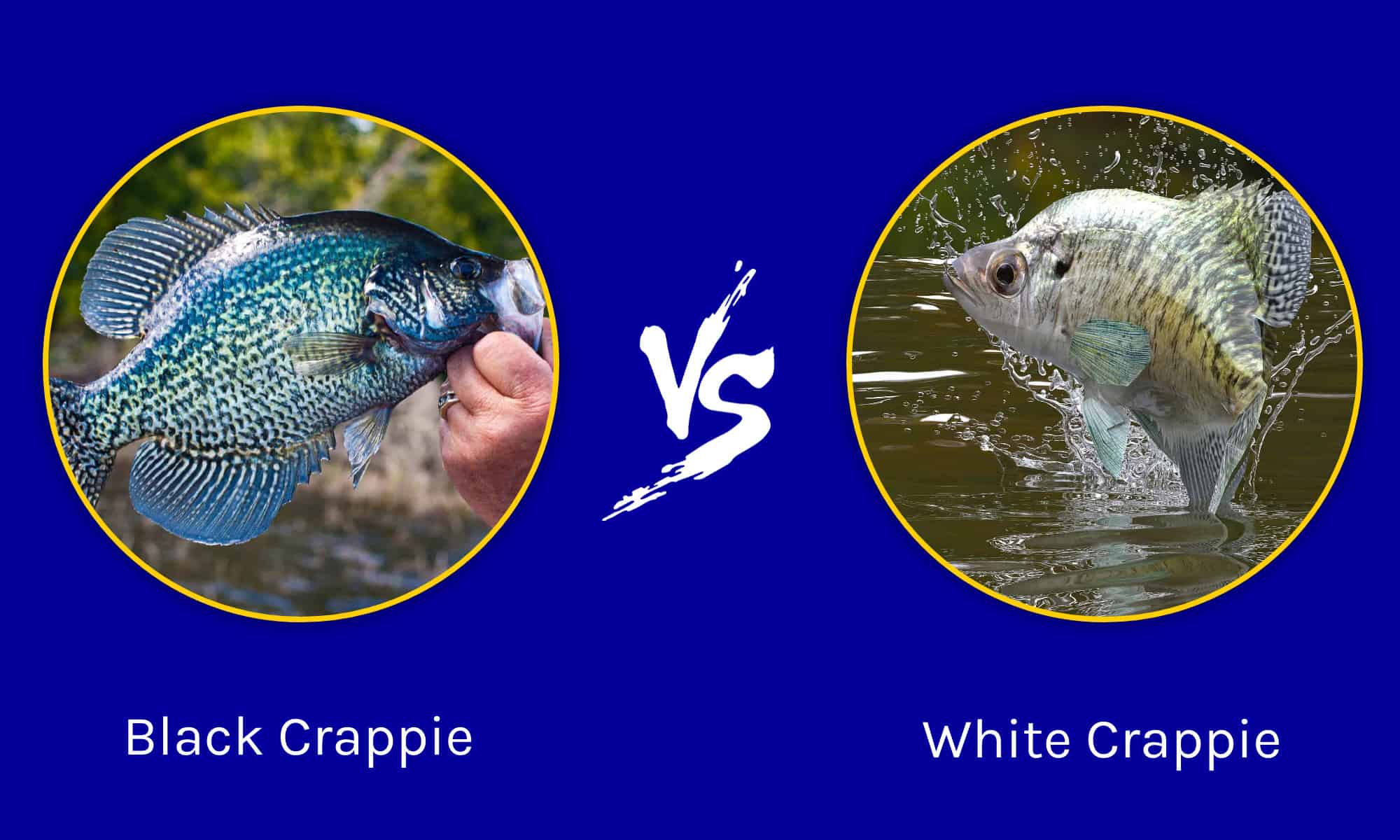Black and White Crappies
Popular amongst recreational anglers in North America, crappies are two species of medium-sized freshwater fish from the sunfish family. Because they are small enough to fit in a frying pan, crappies are often called “panfish.” Their bodies are oval, with scales approaching silver-green. They also have downturned mouths and spiny fins.
Crappie fish feed on smaller species, even the young of fish that prey upon them, like northern pike and walleye. In addition to smaller fish, crappies will feed on insects and zooplankton. They feed mainly in the mornings and evenings, in open water or near the shore. During the day, they tend to be less active and stay near submerged objects.

White crappies can be distinguished from black crappies by their faint vertical stripes.
©Jennifer White Maxwell/Shutterstock.com
Key Differences Between White and Black Crappies
| White Crappie (Pomoxis annularis) | Black Crappie (Pomoxis nigromaculatus) |
|---|---|
| White crappies have faint vertical stripes. | Black crappies have irregular black spots. |
| They prefer the rough waters of rivers and reservoirs. | They prefer still, clear waters. |
| White crappies are the lighter fish of the two. | Black crappies are heavier fish. |
| They have six spines on the dorsal fin. | They have seven or eight spines on the dorsal fin. |
| The ratio of the distance from the middle of the eye to the dorsal fin and the length of the dorsal fin is not equal. | The length of the dorsal fin is equal to the distance between the center of the eye and the beginning of the dorsal fin. |

One key difference between black and white crappies is that black crappies have irregular black spots on their backs.
©M Huston/Shutterstock.com
Black crappies can be distinguished from white ones if you know what to look for. The easiest ways are to check the spot patterns on the back, the number of spines on the dorsal fin, or the eye placement relative to the dorsal fin. The kind of water you catch the fish in can also be a good indicator of the type.
Thank you for reading! Have some feedback for us? Contact the AZ Animals editorial team.








